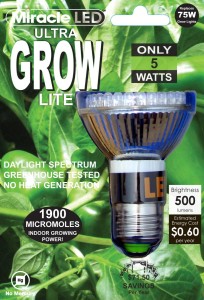Now here’s a juxtaposition you probably never thought about. What, after all, have grow lights got to do with manned space flight?
Neither Rocket Man or Space Oddity mention propagating edible vegetation, though had there been additional verses then regrets may well have been expressed about this omission as our plucky heroes starved to death.
Gotta Feed The Crew
Because it is both obvious and simple when you think about it. If you’re going for more than a quick spin around the Earth you need to feed the crew.
And the first deep space mission will undoubtedly be to Mars, principally because it’s the easiest place to get to and not too hostile when you get there (though not the kind of place to raise your kids by all accounts).
A round trip that allows for also staying on Mars for a spot of tourism should take about two years. Even a one way journey with the intent of living out your days in the red dust requires a great deal of food.
If You Are Taking All The Food You Need For A Two Year Trip You’re Gonna Need A BIG Rocket!
Sending the crew off with a flask of decaff and a round of sandwiches isn’t going to cut it. But neither can you load a hamper large enough to feed them all that time, because the weight would be too great to ever get the rocket off the ground in the first place.
So what’s to be done?
Grow your own, obviously. Plants are very efficient at absorbing carbon dioxide which they convert into organic material (food) and oxygen. It’s a win-win since the astronauts get a supply of food plus a built-in CO2 recycling system. All the plants need is a small amount of nutrients (soil or enriched water), warmth and light.
And there’s your problem.
Plants Are Picky
Plants are surprisingly picky about what kind of light they need. In fact, they only really care for light in the blue and red parts of the spectrum and have little use for all the rest. This however is not how we humans like our light.
People Like White Light – Plants Prefer Red and Blue
We like “white” light which basically covers deep indigo to the darkest red and everything in between. Clearly then, only a small percentage of visible light is any use to a plant. On Earth that’s not a problem since sunlight is sufficiently bright that plants derive enough from this small fraction anyway.
In space no-one can rear a bean.
On a spaceship you need to provide artificial light. Now grow lights have been around for a while, with the state of the art being represented until recently by high intensity discharge (HID) lamps. Like most forms of incandescent light, these emit light in all parts of the spectrum but metal halide and high pressure sodium lamps do at least produce useful amounts of light at blue and red spectral wavelengths respectively.
There are however a number of significant problems with using HID lamps on a spacecraft: heavy and bulky and you need both types (blue and red); need constant replacement bulbs; generate huge amounts of heat; require large amounts of electricity and are noisy and use very high voltages due to the ballasts.
Meanwhile… Back On Earth
Back on Earth, indoor plant growers either put up with or work around these issues, but on a space craft the whole idea is simply never going to get off the ground, metaphorically or literally. There is however an alternative that will fly (enough with the puns).
- LED grow lights are manufactured to emit light at exactly the wavelengths required for plant photosynthesis. Each unit consists of one or more LED lamps that target a specific part of the spectrum. Taken as a whole, it can be dynamically controlled to vary the balance between blue and red to complement different phases in plant growth.
Benefits Of LED Grow Lights
-
But the great thing about LED grow lighting is that, in short, it’s everything that HIDs are not.
- LEDs consume very little low voltage electricity
- Should last for several missions without maintenance or replacement
- Produce virtually no heat
- Are lightweight and robust
- Plants absolutely thrive with them.
It’s lettuce, but not as we know it.
So that, in a nutshell, is why manned deep space exploration was never going to get anywhere until these little gems came on the scene (LED grow lights).
And to think that many folk use them to grow interesting herbal substances. Almost makes you wonder what they’re smoking.
Everything you ever wanted to know about LED grow lights but frankly couldn’t be bothered to ask is to be found right here.



